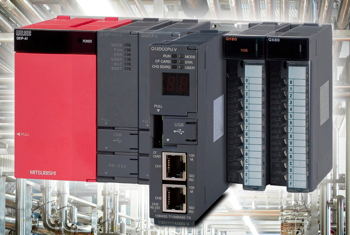PAC-based batch control eliminates the need for PCs
![]() Mitsubishi Electric has collaborated with the Solvenian process control specialist Inea to develop a batch control system that runs on a PAC (programmable automation controller) rather than a PC. It says that the C Batch software will improve security and cut costs.
Mitsubishi Electric has collaborated with the Solvenian process control specialist Inea to develop a batch control system that runs on a PAC (programmable automation controller) rather than a PC. It says that the C Batch software will improve security and cut costs.
Batch control systems usually rely on PC-based installations, often communicating with shop-floor controllers via OPC. But, according to Mitsubishi, this approach poses programming, integration and security issues, as well being susceptible to the lack of robustness of PCs on the plant floor.

The new system runs a complete batch engine, with recipe management, within a PAC. This removes the need for a PC-based batch server, simplifying the system architecture, speeding implementation and cutting costs. Furthermore, by operating in a PAC environment, exposure to IT security issues is reduced. For example, personnel access to PAC hardware is generally more restricted than to PCs. And, by avoiding PCs, there is less chance of malware infections.
The software, which complies with ISA S88.01, provides the key features of recipe creation and management, the creation of batches and control of their execution, automatic execution of recipes, and simultaneous execution of several recipes – all within the PAC environment. An operator interface is provided by Mitsubishi’s Batch View software running on HMIs.
Because C Batch is PAC-based, batch cycle times are minimised and deterministic execution speeds are optimised, helping to improve productivity. According to Mitsubishi, running the software on a PAC also makes it easier to implement and react to changes within a process, and to scale recipe parameters and production batches for greater flexibility.
According to Mitsubishi development manager Thomas Lantermann, “many manufacturers prefer the greater simplicity and reliability of PAC-based systems. The use of PACs is increasing as many believe it brings a greater degree of application robustness to process control tasks by making use of industrially-proven hardware, often reducing the risks of malware infection.”

